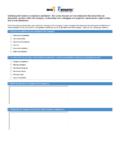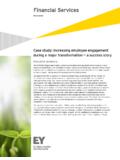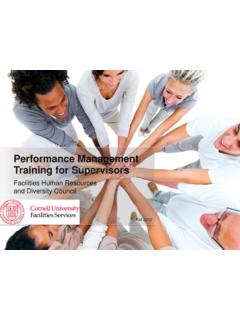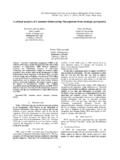Transcription of TESTING AND ASSESSMENT: AN EMPLOYER ... - Uniform …
1 TESTING AND assessment : AN EMPLOYER 'S GUIDE. TO GOOD PRACTICES. Department of Labor Employment and Training Administration 1999. Foreword PURPOSE of the GUIDE. In today's competitive marketplace and complex legal environment, employers face the challenge of attracting, developing, and retaining the best employees. Michael Eisner, CEO of the Disney Corporation, recognized the impact of personnel decisions on a business' bottom-line when he remarked, My inventory goes home every night.. This guide is to help managers and human resource (HR) professionals use assessment practices that are the right choices for reaching their organizations' HR goals. It conveys the essential concepts of employment TESTING in easy-to-understand terms so that managers and HR professionals can Evaluate and select assessment tools/procedures that maximize chances for getting the right fit between jobs and employees Administer and score assessment tools that are the most efficient and effective for their particular needs Interpret assessment results in an accurate manner Understand the professional and legal standards to be followed when conducting personnel assessment .
2 FORMAT of the GUIDE. This Guide is structured around a set of assessment principles and their applications. The information is organized so that readers from a variety of backgrounds will find the information presented in a clear and useful manner. Each chapter covers a critical aspect of the assessment process. The issues involved in each aspect are outlined at the beginning of each chapter. Thirteen principles of assessment are explained in the Guide. The last chapter (Chapter 9). summarizes the main points of the principles, serving as a review of the material discussed in the Guide. Appendix A offers a list of resource materials for those interested in more information on a particular topic, and Appendix B is a glossary for quick clarification of terms and concepts. The Guide is designed to provide accurate and important information regarding TESTING as part of a personnel assessment program. It gives general guidelines and must not be viewed as legal advice. ii Acknowledgments TESTING and assessment : An EMPLOYER 's Guide to Good Practices (Guide) was produced and funded by the Skills assessment and Analysis Program in the Department of Labor, Employment and Training Administration, Office of Policy and Research (OPR) under the direction of Gerard F.
3 Fiala, Administrator. The Skills assessment and Analysis Program is directed by Donna Dye, Personnel Research Psychologist, who provided technical direction and support for this Guide. The Guide was prepared under Department of Labor Grants with the North Carolina Employment Security Commission, Southern assessment Research and Development Center and National O*NET. Consortium; the New York Department of Labor; and the Utah Department of Employment Security. The Guide was completed under the direction of David Rivkin. Mr. Rivkin also served as editor of the Guide. Authors of this Guide were Syed Saad, Gary W. Carter, Mark Rothenberg, and Enid Israelson. Grateful acknowledgment is made to Phil Lewis, Patrice Gilliam-Johnson, Jonathan Levine, and Brenda Dunn for their contribution. Thanks are also given to Ann Kump, Helen Tannenbaum, Don Kreger, Kristin Fiske, and Marilyn Silver whose valuable suggestions were very much appreciated. Grateful acknowledgment is also made to Suzan Chastain, Department of Labor, Office of the Solicitor, Division of Civil Rights, and Hilary R.
4 Weinerand and Cynthia Misicka of the Equal Employment Opportunity Commission for consultant review and insights into the final preparation of this Guide. Special Notice Material in this publication is in the public domain and may be reproduced, fully or partially, without permission of the federal government. Source credit is requested but not required. Permission is required only to reproduce any copyrighted material contained herein. This material will be made available to sensory impaired individuals upon request. Voice phone: (202) 219-7664. TDD* phone: (800) 326-2577. *Telecommunications Device for the Deaf iii Table of Contents Chapter Page 1 Personnel assessment .. 1-1. 2 Understanding the Legal Context of assessment Employment Laws and Regulations with Implications for assessment .. 2-1. 3 Understanding Test Quality Concepts of Reliability and Validity .. 3-1. 4 assessment Tools and Their Uses .. 4-1. 5 How to Select Tests Standards for Evaluating Tests .. 5-1. 6 Administering assessment Instruments.
5 6-1. 7 Using, Scoring, and Interpreting assessment Instruments .. 7-1. 8 Issues and Concerns with assessment .. 8-1. 9 A Review Principles of assessment .. 9-1. Appendix A Sources of Additional information on Personnel assessment .. A-1. B Glossary of assessment Terms .. B-1. iv CHAPTER 1 Personnel assessment Personnel assessment is a systematic approach to gathering information about individuals. This information is used to make employment or career-related decisions about applicants and employees. assessment is conducted for some specific purpose. For example, you, as an EMPLOYER , may conduct personnel assessment to select employees for a job. Career counselors may conduct personnel assessment to provide career guidance to clients. Chapter Highlights 1. Personnel assessment tools: tests and procedures 2. Relationship between the personnel assessment process and tests and procedures 3. What do tests measure? 4. Why do organizations conduct assessment ? 5. Some situations in which an organization may benefit from TESTING 6.
6 Importance of using tests in a purposeful manner 7. Limitations of personnel tests and procedures fallibility of test scores. Principles of assessment Discussed Use assessment tools in a purposeful manner Use the whole-person approach to assessment . 1. Personnel assessment tools: tests and procedures Any test or procedure used to measure an individual's employment or career-related qualifications and interests can be considered a personnel assessment tool. There are many types of personnel assessment tools. These include traditional knowledge and ability tests, inventories, subjective procedures, and projective instruments. In this guide, the term test will be used as a generic term to refer to any instrument or procedure that samples behavior or performance. 1-1. Personnel assessment tools differ in Purpose, , selection, placement, promotion, career counseling, or training What they are designed to measure, , abilities, skills, work styles, work values, or vocational interests What they are designed to predict, , job performance, managerial potential, career success, job satisfaction, or tenure Format, , paper-and-pencil, work-sample, or computer simulation Level of standardization, objectivity, and quantifiability assessment tools and procedures vary greatly on these factors.
7 For example, there are subjective evaluations of resumes, highly structured achievement tests, interviews having varying degrees of structure, and personality inventories with no specific right or wrong answers. All assessment tools used to make employment decisions, regardless of their format, level of standardization, or objectivity, are subject to professional and legal standards. For example, both the evaluation of a resume and the use of a highly standardized achievement test must comply with applicable laws. assessment tools used solely for career exploration or counseling are usually not held to the same legal standards. 2. Relationship between the personnel assessment process and tests and procedures A personnel test or a procedure provides only part of the picture about a person. On the other hand, the personnel assessment process combines and evaluates all the information gathered about a person to make career or employment-related decisions. Figure 1 on page 1-3 highlights the relationship between assessment tools and the personnel assessment process.
8 3. What do tests measure? People differ on many psychological and physical characteristics. These characteristics are called constructs. For example, people skillful in verbal and mathematical reasoning are considered high on mental ability. Those who have little physical stamina and strength are labeled low on endurance and physical strength. The terms mental ability, endurance and physical strength are constructs. Constructs are used to identify personal characteristics and to sort people in terms of how much they possess of such characteristics. Constructs cannot be seen or heard, but we can observe their effects on other variables. For example, we don't observe physical strength but we can observe people with great strength lifting heavy objects and people with limited strength attempting, but failing, to lift these 1-2. Tests, inventories, and procedures are assessment tools that may be used to measure an individual's abilities, values, and personality traits. They are components of the assessment process.
9 ! observations ! physical ability tests ! resume evaluations ! personality inventories ! application blanks/questionnaires ! honesty/integrity inventories ! biodata inventories ! interest inventories ! interviews ! work values inventories ! work samples/performance tests ! assessment centers ! achievement tests ! drug tests ! general ability tests ! medical tests ! specific ability tests assessment process Systematic approach to combining and evaluating all the information gained from TESTING and using it to make career or employment-related decisions. Figure 1. Relationship between assessment tools and the assessment process. objects. Such differences in characteristics among people have important implications in the employment context. Employees and applicants vary widely in their knowledge, skills, abilities, interests, work styles, and other characteristics. These differences systematically affect the way people perform or behave on the job. These differences in characteristics are not necessarily apparent by simply observing the employee or job applicant.
10 Employment tests can be used to gather accurate information about job-relevant characteristics. This information helps assess the fit or match between people and jobs. To give an example, an applicant's score on a mechanical test reflects his or her mechanical ability as measured by the test. This score can be used to predict how well that applicant is likely to perform in a job that requires mechanical ability, as demonstrated through a professionally conducted job analysis. Tests can be used in this way to identify potentially good workers. Some tests can be used to predict employee and applicant job performance. In TESTING terms, whatever the test is designed to predict is called the criterion. A criterion can be any measure of work behavior or any outcome that can be used as the standard for successful job performance. Some commonly used criteria are productivity, supervisory ratings of job performance, success in training, 1-3. tenure, and absenteeism. For example, in measuring job performance, supervisory ratings could be the criterion predicted by a test of mechanical ability.





